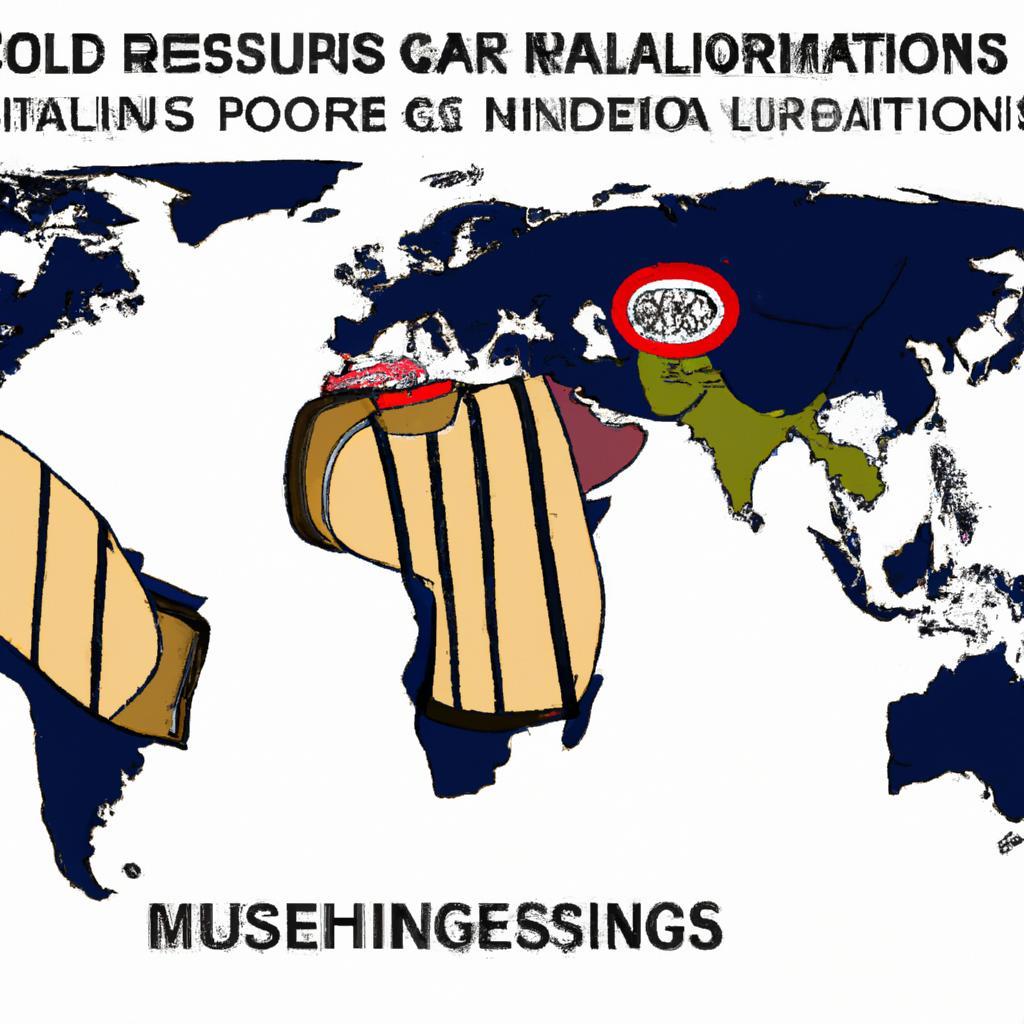In a world where fashion knows no borders, navigating the complex landscape of international clothing and shoe sizes can feel like deciphering a secret language. As trends spill over from runway to sidewalk, the allure of global styles beckons us all to explore and experiment. Yet, what happens when the perfect piece of clothing or the most comfortable shoes fall prey to the perplexities of sizing discrepancies? Whether you’re an avid traveler, an online shopping enthusiast, or simply someone looking to expand their wardrobe with pieces from across the globe, understanding how to master the art of global sizing is crucial. In this article, we will embark on a journey through the intricacies of international fashion measurements, unravel conversion charts, and equip you with the knowledge to make informed choices, ensuring that what you wear fits not just your style, but your dimensions as well. Prepare to step confidently into a world where fashion is truly universal.
Understanding Size Standards Across Continents
When it comes to clothing and footwear, understanding the unique size standards across different continents can seem like deciphering a secret code. The variations in measurement are not merely a nuance; they can significantly affect how a garment fits. In North America, for example, the sizing often uses numbers or letters, such as sizes 0-20 for women, while Europe tends to follow a numeric format that can cause confusion for those accustomed to the American system. To bridge these differences, one must familiarize themselves with international size charts, which typically include conversions and measurements in centimeters for a more precise fit.
| Region | Women’s Size | Men’s Size |
|---|---|---|
| North America | 4-20 (or S-XL) | 34-50 (or S-XXL) |
| Europe | 34-48 | 44-56 |
| United Kingdom | 6-22 | 34-44 |
Additionally, the world of shoes presents its set of challenges. In the U.S., shoe sizes are denoted by whole numbers and occasionally halves, while Europe follows a metric-based system, using the length of the foot in centimeters. This discrepancy can lead to frustrating shopping experiences, especially when trying to buy shoes online. When you’re tackling international sizing, it becomes essential to have a conversion chart on hand, ensuring that the perfect pair of shoes feels just as comfortable regardless of their origin. Some reliable guidelines suggest that women’s sizes in Europe are typically about 1.5 larger than their American counterparts, while men’s sizes are often about 1-1.5 sizes larger.

Decoding Fit and Style: A Cross-Cultural Perspective
Understanding fit and style in the realm of fashion involves delving into varying cultural nuances that influence how clothing and footwear are perceived across the globe. **Sizing systems** differ dramatically, often leading to confusion for those traversing international borders. For instance, while a “medium” in the U.S. might translate to a “large” in Europe, the same garment could be labeled as “size 38” in Japan. It’s not just about numbers; it’s about the **cultural context** surrounding body image and fashion. Here are some key considerations to keep in mind:
- **Regional Variations:** Sizes differ not only by country but also by region, influenced by local demographics.
- **Cultural Influences:** Traditional attire and local body standards play a significant role in sizing conventions.
- **Fashion Trends:** What’s trending in one region may not even be recognized in another, emphasizing the importance of understanding local styles.
In addition to varied size classifications, **materials and construction techniques** can further complicate fit. For instance, European brands often adopt a more tailored approach, while Asian brands might opt for looser fits, reflecting their respective aesthetic values. A quick reference table can help illustrate these differences:
| Region | Common Size Label | Typical Fit Style |
|---|---|---|
| U.S. | Small, Medium, Large | Relaxed or fitted |
| Europe | 34-44 | Tailored |
| Asia | S, M, L | Loose |
Understanding these complexities allows you to navigate fashion challenges with confidence, ensuring that you choose not only the right size but also styles that resonate with your personal aesthetic while respecting cultural distinctions. Mastering these insights empowers you to curate a wardrobe that transcends borders, blending global influences while maintaining a unique sense of self.

Tips for Seamless International Shopping Experiences
When shopping internationally, understanding the complexities of sizing can be the difference between a wardrobe win or a fashion fail. To minimize the chances of disappointment, **convert sizes wisely** by utilizing size charts from reputable retailers. Many brands provide comprehensive conversion tables to bridge the gap between different systems. Here are some tips to consider:
- Always Refer to Size Guides: Much like clothing, shoe sizes can vary widely across countries. A size here may not translate the same across the sea.
- Consider Brands and Their Specifics: Each brand might have unique sizing quirks, so don’t rely solely on standardized charts.
- Read Customer Reviews: Feedback from previous buyers can provide insight into how true-to-size items actually fit.
- Check Return Policies: Make sure you understand the return process in case the item doesn’t meet your expectations.
While you master size conversions, don’t forget about materials and fit, as they can greatly influence comfort and style. Awareness of these factors is essential to a successful international shopping expedition. For quick reference, here’s a simplified comparison for men’s shoe sizes:
| US Size | UK Size | EU Size |
|---|---|---|
| 8 | 7 | 41 |
| 9 | 8 | 42 |
| 10 | 9 | 43 |
| 11 | 10 | 44 |
| 12 | 11 | 45 |
By treating size as a relative concept rather than a constant, you can better navigate and enhance your international shopping experiences. Happy shopping!
Final Thoughts
As we conclude our journey through the intricate world of global fashion sizing, it’s clear that understanding international clothing and shoe sizes is not just a matter of numbers, but an essential skill for the modern wardrobe adventurer. With each country’s unique system offering its own twists, being equipped with the right conversions can unlock a trove of style possibilities from every corner of the globe.
Whether you’re shopping for that one-of-a-kind piece in a bustling market or navigating the vast aisles of an online store, this knowledge empowers you to make informed decisions and embrace the rich diversity of fashion. As you step out into the world, remember that a well-fitted outfit transcends borders and helps you express your individuality.
So, go forth with confidence, armed with your newfound understanding of global sizing. Explore, experiment, and revel in the fashion stories waiting to be told—one perfectly fitting garment at a time. Safe travels on your style journey!
